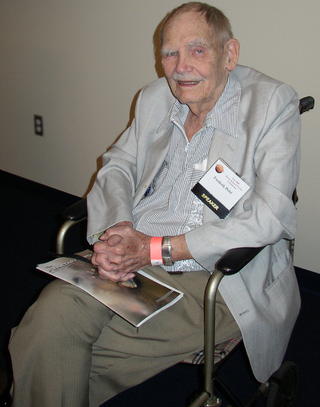
Frederik George Pohl Jr. was an American science-fiction writer, editor, and fan, with a career spanning nearly 75 years—from his first published work, the 1937 poem "Elegy to a Dead Satellite: Luna", to the 2011 novel All the Lives He Led.

Dangerous Visions is a science fiction short story anthology edited by American writer Harlan Ellison and illustrated by Leo and Diane Dillon. It was published in 1967.

Gardner Raymond Dozois was an American science fiction author and editor. He was the founding editor of The Year's Best Science Fiction anthologies (1984–2018) and was editor of Asimov's Science Fiction magazine (1986–2004), garnering multiple Hugo and Locus Awards for those works almost every year. He also won the Nebula Award for Best Short Story twice. He was inducted to the Science Fiction Hall of Fame on June 25, 2011.

Asimov's Science Fiction is an American science fiction magazine published by Penny Press and edited by Sheila Williams. It was launched as a quarterly by Davis Publications in 1977, under the title Isaac Asimov's Science Fiction Magazine, and was quickly successful, reaching over 100,000 circulation within a year, and switching to monthly publication within a couple of years. George H. Scithers, the first editor, published many new writers who went on to be successful in the genre. Scithers favoured traditional stories without sex or four-letter words; along with frequent humorous stories this gave the magazine a reputation for printing juvenile fiction, despite its success.
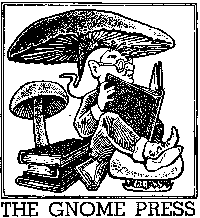
Gnome Press was an American small-press publishing company primarily known for publishing many science fiction classics. Gnome was one of the most eminent of the fan publishers of SF, producing 86 titles in its lifespan — many considered classic works of SF and Fantasy today. Gnome was important in the transitional period between Genre SF as a magazine phenomenon and its arrival in mass-market book publishing, but proved too underfunded to make the leap from fan-based publishing to the professional level. The company existed for just over a decade, ultimately failing due to inability to compete with major publishers who also started to publish science fiction. In its heyday, Gnome published many of the major SF authors, and in some cases, as with Robert E. Howard's Conan series and Isaac Asimov's Foundation series, was responsible for the manner in which their stories were collected into book form.
The Edward E. Smith Memorial Award for Imaginative Fiction, or Skylark, annually recognizes someone for lifetime contributions to science fiction, "both through work in the field and by exemplifying the personal qualities which made the late 'Doc' Smith well-loved by those who knew him". It is presented by the New England Science Fiction Association at its annual convention, Boskone, to someone chosen by a vote of NESFA members. The trophy is a large lens mounted on a simple plinth.

"The Originist" is a short story by Orson Scott Card. First published in the short story collection Foundation's Friends (1989), it also appears in his short story collection Maps in a Mirror. This story is set in Isaac Asimov's Foundation universe.

Masterpieces: The Best Science Fiction of the Century (2001) is a science fiction anthology edited by American writer Orson Scott Card. It contains twenty-six stories by different writers.
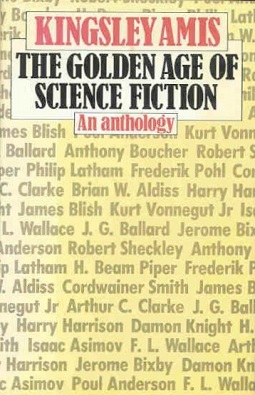
The Golden Age of Science Fiction is an anthology of science fiction short stories all originally published between 1949 and 1962. The stories were selected and introduced by Kingsley Amis, who also wrote an Editor's Note and a 21-page Introduction. The collection was first published by Hutchinson in 1981 and was released in paperback by Penguin in 1983.

The 1990 Annual World's Best SF is an anthology of science fiction short stories edited by Donald A. Wollheim and Arthur W. Saha, the nineteenth volume in a series of nineteen. It was first published in paperback by DAW Books in July 1990, followed by a hardcover edition issued in August of the same year by the same publisher as a selection of the Science Fiction Book Club. For the hardcover edition the original cover art of Jim Burns was replaced by a new cover painting by Richard Powers.
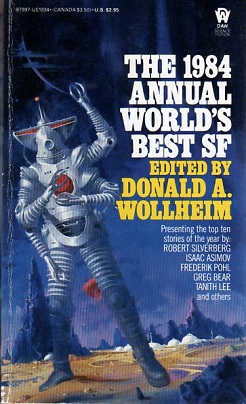
The 1984 Annual World's Best SF is an anthology of science fiction short stories edited by Donald A. Wollheim and Arthur W. Saha, the thirteenth volume in a series of nineteen. It was first published in paperback by DAW Books in June 1984, followed by a hardcover edition issued in August of the same year by the same publisher as a selection of the Science Fiction Book Club. For the hardcover edition the original cover art by Vincent Di Fate was replaced by a new cover painting by Richard Powers.

The 1989 Annual World's Best SF is an anthology of science fiction short stories edited by Donald A. Wollheim and Arthur W. Saha, the eighteenth volume in a series of nineteen. It was first published in paperback by DAW Books in June 1989, followed by a hardcover edition issued in September of the same year by the same publisher as a selection of the Science Fiction Book Club. For the hardcover edition the original cover art by Jim Burns was replaced by a new cover painting by Richard M. Powers.
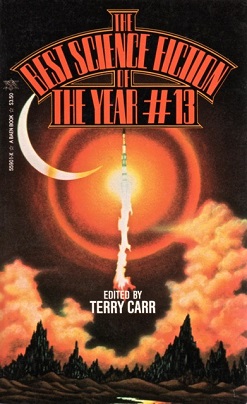
The Best Science Fiction of the Year #13 is an anthology of science fiction short stories edited by Terry Carr, the thirteenth volume in a series of sixteen. It was first published in paperback by Baen Books in July 1984, and in hardcover and trade paperback by Gollancz in December of the same year.

Comets is an anthology of science fiction short stories edited by Isaac Asimov, Martin H. Greenberg and Charles G. Waugh as the fourth volume in their Isaac Asimov's Wonderful Worlds of Science Fiction series. It was first published in paperback by Signet/New American Library in February 1986.

The Mammoth Book of Vintage Science Fiction: Short Novels of the 1950s is a themed anthology of science fiction short works edited by Isaac Asimov, Martin H. Greenberg, and Charles G. Waugh, the third in a series of six samplers of the field from the 1930s through the 1980s. It was first published in trade paperback by Robinson in 1990. The first American edition was issued in trade paperback by Carroll & Graf in the same year.

The Mammoth Book of Fantastic Science Fiction: Short Novels of the 1970s is a themed anthology of science fiction short works edited by Isaac Asimov, Martin H. Greenberg, and Charles G. Waugh, the fifth in a series of six samplers of the field from the 1930s through the 1980s. It was first published in trade paperback by Robinson in 1992. The first American edition was issued in trade paperback by Carroll & Graf in the same year.

Nebula Award Stories Eight is an anthology of science fiction short works edited by American writer Isaac Asimov. It was first published in hardcover in November 1973, in the United States by Harper & Row and in the United Kingdom by Gollancz. The British edition bore the variant title Nebula Award Stories 8. Paperback editions followed from Berkley Medallion in the U.S. in September 1975, and Panther in the U.K. in the same year; both paperback editions adopted the British version of the title. The book has also been published in German.
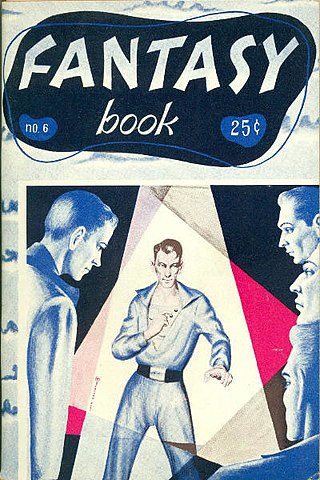
Fantasy Book was a semi-professional American science fiction magazine that published eight issues between 1947 and 1951. The editor was William Crawford, and the publisher was Crawford's Fantasy Publishing Company, Inc. Crawford had problems distributing the magazine, and his budget limited the quality of the paper he could afford and the artwork he was able to buy, but he attracted submissions from some well-known writers, including Isaac Asimov, Frederik Pohl, A. E. van Vogt, Robert Bloch, and L. Ron Hubbard. The best-known story to appear in the magazine was Cordwainer Smith's first sale, "Scanners Live in Vain", which was later included in the first Science Fiction Hall of Fame anthology, and is now regarded as one of Smith's finest works. Jack Gaughan, later an award-winning science fiction artist, made his first professional sale to Fantasy Book, for the cover illustrating Smith's story.

Nebula Winners Fourteen is an anthology of award winning science fiction short works edited by Frederik Pohl. It was first published in hardcover by Harper & Row in August 1980. The first British edition was published in hardcover by W. H. Allen in April 1981. Paperback editions followed from Star in the U.K. in March 1982 and Bantam Books in the U.S. in July 1982.

Robert Silverberg Presents the Great SF Stories: 1964 is an American anthology of short stories, edited by Robert Silverberg and Martin H. Greenberg, first published in hardcover by NESFA Press in December 2001. It is a continuation of the Isaac Asimov Presents The Great SF Stories series of short story anthologies, which attempts to list the great science fiction stories from the Golden Age of Science Fiction. This book is a continuation of the book series The Great SF Stories originally edited by Isaac Asimov and Martin H. Greenberg with the last one published in 1992.



















